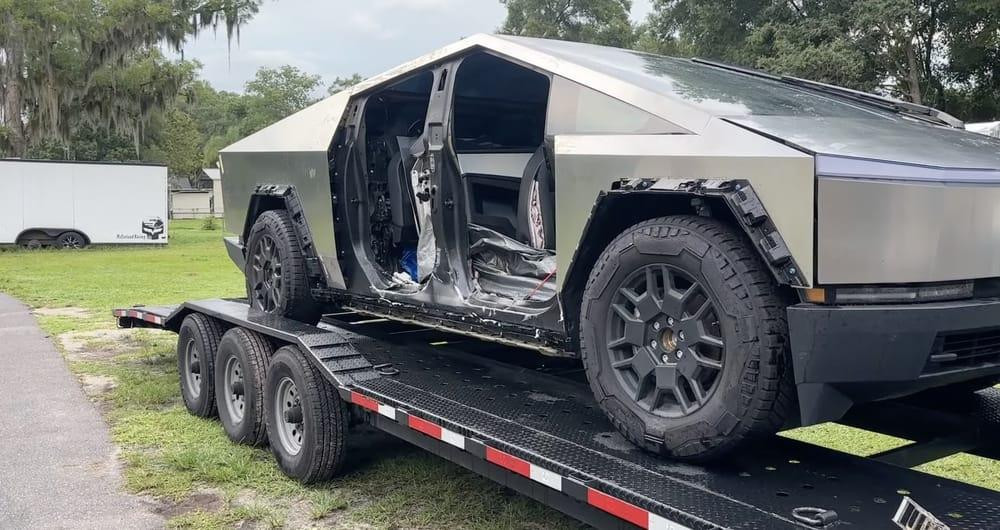The screen goes red, and the vehicle crawls at 4 mph. It looks every inch a failed project. This is the first totaled Tesla Cybertruck, T-boned by a Ford Edge earlier this year, and it appears as though it will never drive again. Kyle Wade, an expert in rebuild projects, bought it with hopes of fixing it but might end up regretting his decision.
Earlier this summer, Kyle Wade purchased the first totaled Cybertruck. The EV was T-boned by a Ford Edge at an intersection, pushed into a curb, and into a Stop sign, bending a tie rod in the process. Apart from the passenger side doors and fender flares, which were removed due to extensive damage, the vehicle also has deployed airbags and passenger-side deformation.
The Cybertruck was declared a write-off and sold by the insurance company. Wade saw potential in it, believing he could restore it to its former glory. However, the task is proving to be more challenging than he anticipated. Now, he faces numerous headaches trying to fix the vehicle.
After the crash, the Cybertruck went into limp mode. The onboard screen turned red, displaying "Critical steering issue detected," and the EV wouldn't drive any faster than 4 mph (6.4 kph). This was not the smooth repair process Wade had envisioned.
The steering system needs recalibration, but every attempt to do so results in a new message: "Pull over safely." Despite consulting with Tesla experts, Wade's efforts are met with messages like "Calibration aborted." The steering wheel and rack refuse to move, and the problem persists.
After hours of labor, the vehicle remains unable to drive faster than 4 mph and does not steer. Wade plans to reattach the doors and check for system miscommunication when parts are missing, though he doubts this will resolve the issue. The team suspects a fault in the steering column control module (SCCM) and has ordered a replacement in hopes it will solve the problem.
Initially, the Cybertruck could still steer after the crash, relying on a secondary system acting as a backup. The primary system's calibration failed, leading to the current predicament. Wade, who drove 18 hours from Florida to Missouri to retrieve the truck, is now grappling with second thoughts about the purchase.
Despite the difficulties, Wade's determination to fix the Cybertruck is admirable. If not for his efforts, the brand-new yet totaled Tesla Cybertruck would have ended up in a scrapyard. The former owner, involved in the crash on his way to a meeting, wanted nothing more to do with it. Wade's commitment to restoring the vehicle, despite the seemingly insurmountable challenges, speaks to his passion for rebuild projects.
Only time will tell if Kyle Wade's efforts will pay off. For now, the first-ever totaled Tesla Cybertruck remains a testament to the trials and tribulations of automotive restoration.

















